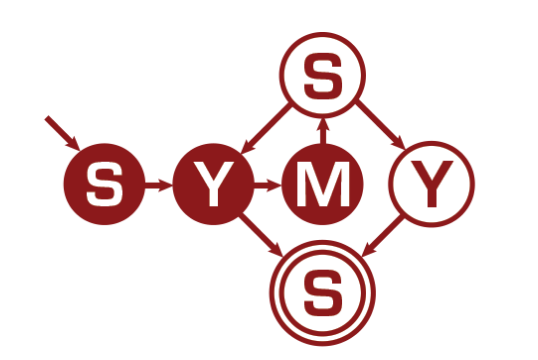Humans of SymSys: Blue Sheffer
/“Fight off academic intimidation of others as much as you can -- it's entirely unhelpful. Learn from the brilliant peers that surround you, and befriend those who you look up to.”
Blue is a recent graduate of the Symbolic Systems Program (B.S. ’17). He concentrated in neuroscience, completed an honors thesis on brain-machine interfaces, and was an advising fellow. Here, he shares some thoughts on SymSys, research, and gives academic advice.
What drew you to the SymSys major?
Once I found out about Symbolic Systems, I didn’t really even consider any other majors. When I came to Stanford, I knew that I wanted to study neuroscience, but I also had budding interests in computer science and philosophy. Studying SymSys would allow me to study each of these fields in depth, as well as their intersections, so it was a perfect match.
What is your concentration and why did you choose it?
I chose the Neuroscience concentration because understanding how the brain processes information is at the forefront of my academic interests. The concentration puts emphasis on technical skills which are increasingly necessary for a career as a neuroscientist.
What’s your favorite SymSys-related class that you’ve taken so far?
I have many, many "favorites", but here are two:
1) Mathematical Foundations of Computing (CS 103). Depending on what you do, the material may or may not be super applicable, but Keith's quality of instruction is so unbelievably good that you should take it regardless.
3) High-level Vision: From Neurons to Deep Neural Networks (CS 431). I took this as a kind of "capstone" course my senior spring with Kalanit Grill-Spector and Dan Yamins. It was an awesome class that analyzed and compared neuroscience/deep learning approaches to vision.
Are you involved in research? If so, tell us about a project you are working on:
Yes! I currently work at the Stanford Neuroscience and Artificial Intelligence Laboratory. My project focuses on bridging sensory representations with decision making. We've built a model capable of solving complex visual tasks that reflect typical neuroscience experiments, and we are collaborating with experimentalists to compare our model to both behavioral and neural data.
What is one piece of advice you'd like to offer to younger students?
1) Fight off academic intimidation of others as much as you can -- it's entirely unhelpful. Learn from the brilliant peers that surround you, and befriend those who you look up to.
2) Get involved in research! Even if you don't want to go to grad school/have a career in research, it's a really fun way to deepen your knowledge of a subject and be at the forefront of development in your field.
Blue is one of many profiles featuring selected alumni, undergraduates and graduates who are involved in the Symbolic Systems community.


